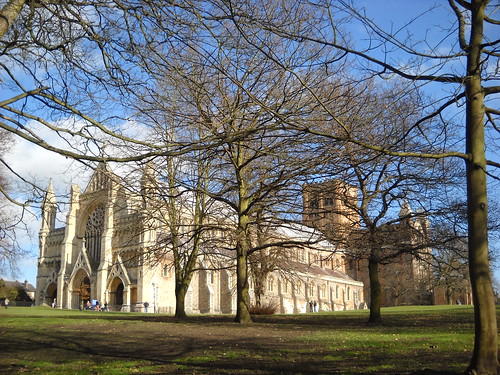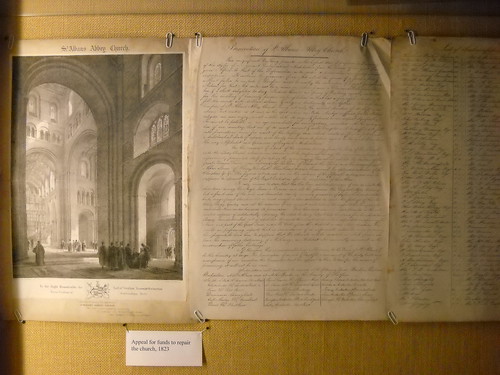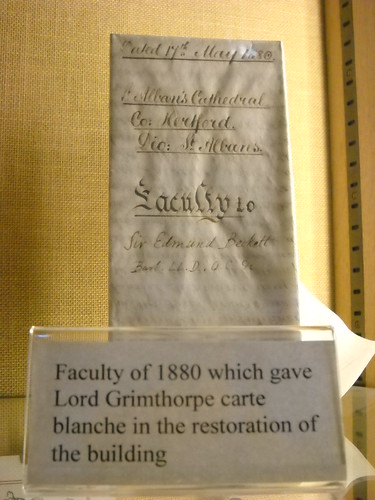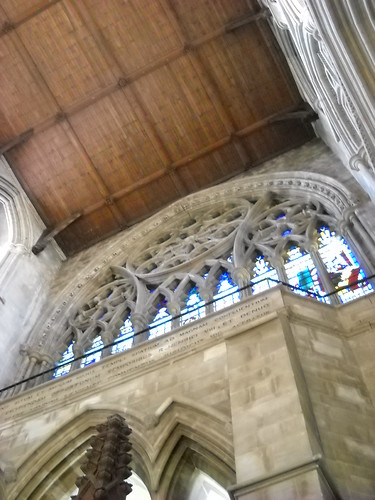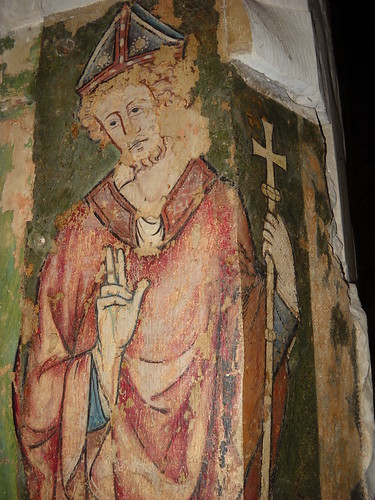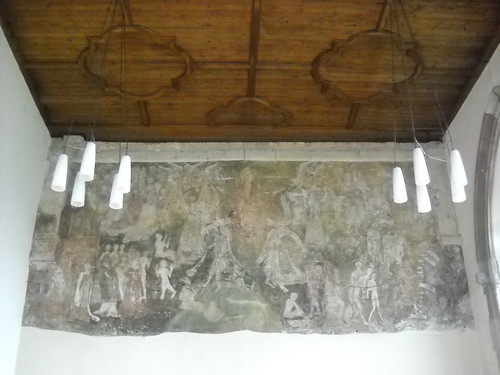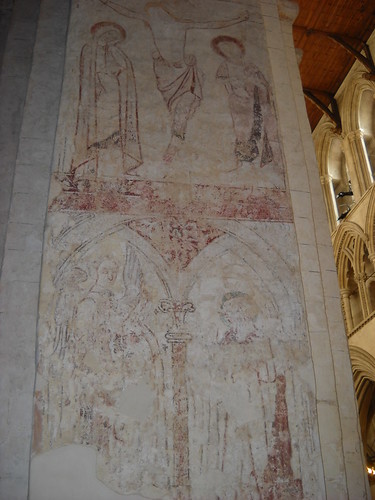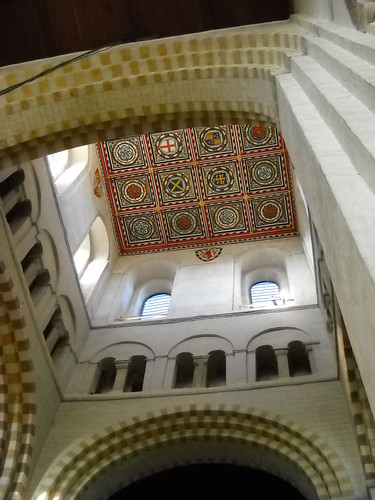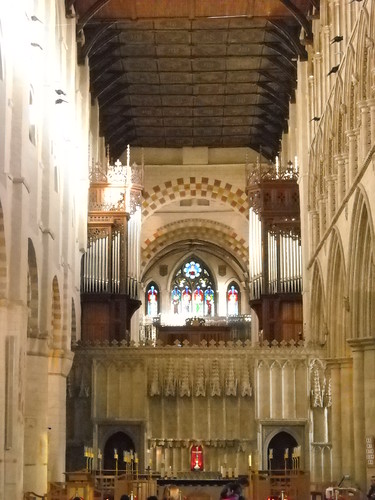 |
| Detail from Darton's New Plan of the Cities of London and Westminster and Borough of Southwark, c. 1817 (mapco.net) |
The burial ground filled up and was closed in 1853. The land was sold and eventually conveyed to the Lambeth Borough Council. In the late 19th century it was landscaped into a recreation ground and the gravestones moved to the boundary walls. Don't ask me what they did with the bodies 'cause I don't know.
 |
| Grave markers which were moved to the periphery of the recreation ground |
If you've read my blog for any length of time you'll be aware of my interest in historic cemeteries. The day I volunteered to do garden clean up at Highgate Cemetery, the tour I took of Kensal Green Cemetery, the stunning view of London from atop the hill at Greenwich Cemetery and the fact that I just enjoy poking around ancient headstones and wondering about the people beneath them is sufficient to justify my status as 'geek'. Not only that, but when you're looking for a truly peaceful and quite spot in a bustling city like London, a cemetery is where you'll find it.
Well, there I was, on a beautifully bright sunny day, sufficiently intrigued as to why this plot of ground in Vauxhall was so radically altered rather than letting everyone lie in peace, snapping a few photos so that I might go back later and study it some more when another member of the walking party admonished me to "have some respect".
Beg pardon?
I was so taken aback that I didn't say anything. Perhaps I should have inquired of him why he thought photographing the stones was disrespectful, when they obviously have not been cared for. Neglect, to me, is the ultimate expression of disrespect so he would have been better aiming his admonition at the borough council. My studies have lead to me to conclude that death was not viewed in the past as we view it now, life being much shorter and beset with disease, pestilence, and war. People were lucky to make it past their 40s, many did not expect to. I've also read of women taking rubbings of their beloved's grave marker as a keepsake; would that man tell them in their hour of grief that they were being disrespectful for doing so?
I didn't say anything but if I had it would be this: I am a garden historian. My job is to study the history of gardens and landscapes designed by humans. Pictures, be they sketches, engravings, maps, drawings, paintings, rubbings, etchings, or photographs are an integral part of that study. Burial grounds, be they large or small, are areas of land designed and created by man to serve a particular purpose, just like a public park or private garden. Some cemeteries have exquisite gardens and several around London can boast Grade I and II buildings and monuments constructed with incredible artistry and craftsmanship - skills in danger of becoming extinct - which makes them all fair game for the intrepid history sleuth out to, er, uncover the story behind a piece of landscape. If taking a photo of grave stones that were moved 100 years ago is disrespectful, what about the beautiful 19th century engravings of historic Highgate Cemetery?
 |
| Engraving of Highgate Cemetery c. 1858 (victorianweb.org) |
Images like this have been invaluable in the restoration and conservation of the Highgate grounds. Are the photos I took of the family marker for Celia Fiennes in the name of historical research disrespectful? Or the pics of my grandparents' and great-grandparents' markers for geneological research? (I can answer that one: no, they didn't mind. They were probably really happy to see me.)
 |
| Detail of the grave marker for Nathaniel Fiennes, his wife, two daughters who died in infancy, and daughter Celia (yes, I took the photo) |
 |
| Grave stones in the floor of Cafe in the Crypt, St. Martins in the Fields at Trafalgar Square (yes, I took this one, too) |
Where permitted I've happily snapped photos of the interiors of cathedrals and churches, tombs of long dead aristocracy, medieval effigies, grave stones on the floor and in the long grass, and intricately carved memorials. As for taking photos of them being disrespectful, what if, God forbid, the archives were lost? Restoration of any such space would be difficult, if not impossible, were it not for the aid of images. What if the church burned to the ground or some other natural disaster struck, like municipal development, that forever damaged or destroyed the markers intended to signify a person's final resting place? When I saw the marker for Celia Fiennes it was mounted on the wall but only because the church was rebuilt 100 years after she was buried so it effectually no longer marks her exact final resting place, which was beneath the stones of the church's floor. Besides, she was a progressive woman; I think she would have been intrigued by the curious device I was using.
Well, we know that bodies have been and continue to be moved, sometimes under horrific circumstances sometimes out of necessity, which is a helluva lot more invasive than snapping a photo of the marker from 10 feet away. So, to that person on the walk I say, I will - respectfully - continue to take photos of burial grounds when permitted and thank you very kindly for giving me such an appropriate blog topic for this spectral time of year. To celebrate, I give you a sampling of the frightening and fabulous architecture and artistry that are historic burial grounds, monuments and markers (all photos by me, except where noted, and all taken with the utmost respect).
 |
| Getting into Goth sprit at the Kensal Green Cemetery tour |
 |
| Hooray for grassland conservation at Greenwich Cemetery |
 |
| Greenwich Cemetery |
 |
| The most beautiful military graveyard I've ever seen at Greenwich Cemetery |
 |
| Early 19th century grave stone artistry at Cafe in the Crypt, London |
 |
| At Kensal Green Cemetery |
 |
| Kensal Green |
 |
| 18th century marker at Salisbury Cathedral |
 |
| Monument at Highgate Cemetery |
 |
| Medieval effigy at Salisbury Cathedral |
 |
| The Gothic architecture of Salisbury Cathedral |
 |
| Johannes Wordsworth at Salisbury Cathedral |
 |
| Monument detail at Salisbury Cathedral |
 |
| Hauntingly beautiful military marker at Salisbury Cathedral |
 |
| Highgate Cemetery, London |
 |
| Highgate Cemetery, London |
 |
| Markers in the garden at Postman's Park, London |
 |
| One of the touching plaques at the G.F. Watts's Memorial to Heroic Service at Postman's Park, London |
 |
| Beautiful and ghostly image from Melbourne Cemetery, Melbourne, Australia (I didn't take this one but I know who did and it was fellow history enthusiast Claudia Funder). |
 |
| Tomb marker for a member of the Austen family (relatives of Jane), St. Mildred's Church, Tenterden, Kent |
 |
| Jane's marker at Winchester Cathedral (austenonly.com) |
 |
| Detail of the memorial to Sam Wilson (d. 1918) by E. Caldwell Spruce, Lawnswood Cemetery, England (appythegardener.blogspot.com. See, I'm not the only one). |
Happy Halloween!
